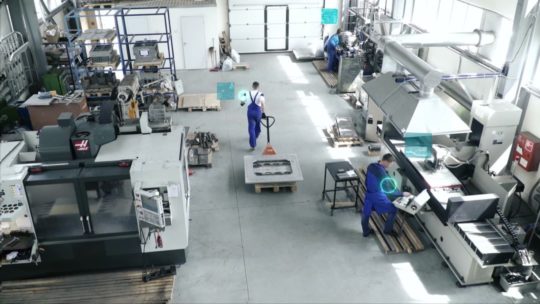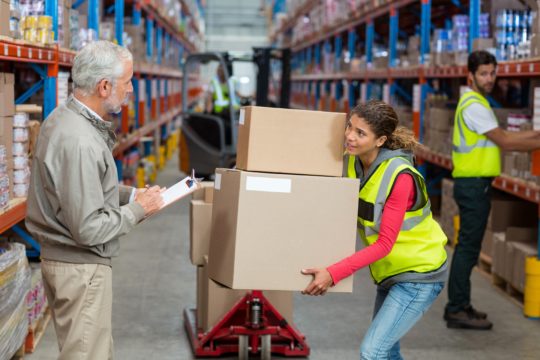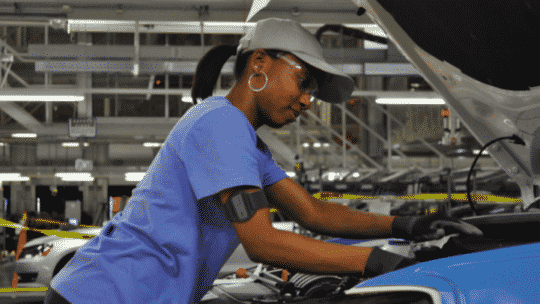Wearable Safety Tech For Innovative Captive Strategies Members

MākuSafe is proud to partner with Innovative Captive Strategies to offer their workers compensation members the opportunity to use workforce wearables to improve worker safety and reduce claims. The video below features Tom West of MākuSafe discussing the benefits of wearable safety technology.
What is MākuSafe?
MākuSafe® is an award-winning wearable Safety, Data & Analytics solution aimed at improving worker health, safety, and productivity while reducing incidents and mitigating workplace hazards and risk exposures.
The MākuSafe wearable’s connected sensors capture motion and environmental data in real-time and improve communication from the front lines. Safety & risk intelligence is sent to a web-based platform which gives company safety leaders new insights and helps them prioritize their workplace safety and risk control efforts.
The sensors within the MākuSafe core device focus on four types of data:
- Environmental conditions around the worker.
- Any hazardous motion experienced by or performed by the worker.
- The location of the worker at the time a sensor threshold is met.
- Voice memos from the worker about conditions they are experiencing.
For industrial clients with ICS worker compensation polices there are many benefits beyond improved workplace safety:
- Loss avoidance based on safety data
- Aid to safety management system efficiency
- Enhanced loss control effectiveness
- Positive impact on safety culture and mindfulness
Want to learn more before making a decision? The MākuSafe Team can provide a quick general overview of the technology and software platform so you’ll understand how it works and can ask any questions you may have.
Ready to get started? Have questions? Let’s talk!

aanna@makusafe.com
4 Easy Steps to Get Started
It’s easy to get started with workforce wearables in an industrial organization. We work closely with the loss control reps, safety leaders and IT departments to ensure a smooth launch. Here’s how we do it.
- MākuSafe works with you on simple details, from workers who will wear the device, to leaders who will access data, and your IT network; so we can preconfigure before install.
- We conduct an on-site half-day visit to install a wall-mounted base station kiosk (the hub for communicating with the MākuSmart cloud software) and place Bluetooth beacons to identify location.
- Your dedicated MākuSafe support team provides orientation for armband wearers (30 minutes), and provides safety leaders with access to the data being collected (30 minutes). Workers can then begin checking devices out for every shift, wear the armband properly and report near-misses.
- Your support team will schedule touch-base meetings to ensure leaders know how to use the platform, and understand taking action on the data gathered.
FAQs
Do you collect personal information about employees?
No. Our wearable core device does not monitor anything biometric/personal/HIPAA covered about the wearer. We are on the upper arm of an employee “looking outward” at the environmental conditions (i.e. ambient air temperature, humidity, air quality, light levels, noise, etc.) that surround him/her.
Do I need to have a dedicated WiFi network to support the MākuSafe equipment?
MākuSafe can use your current Ethernet, WiFi or IoT networks.
As a manager can I be notified when an indicator is detected by a wearable in the MākuSmart platform?
Yes. The MākuSmart platform allows dashboard users to select what types of indicators they would like to receive in the form of an SMS (Text) notification.
Will the device buzz or alert an employee if a hazard is detected?
No. MākuSafe has done extensive research and has chosen to NOT provide feedback directly to the worker. Instead our focus is on providing leadership with actionable insight/data they can use to resolve a hazard or have a meaningful conversation with workers.
Where or how do employees wear the MākuSafe device?
The sensors and associated software algorithms are programmed to assume data is gathered on the upper arm, above the bicep and outside of all clothing. MākuSafe has tested this position on many different workers and environments and results were consistently better in this position regardless of job, person size or work environment.
Who sees the data generated by the wearable?
The only people who have access to the data are those your company has authorized to view worker’s information.
How many people from my company can have access to the MākuSmart Dashboard?
The number of people at your company that have access to your dashboard is determined by the primary contact overseeing the contract with MākuSafe. MākuSafe does not put a limit on the number of dashboard users.
Is the MākuSafe workforce wearable safe to use in a wet environment or in hot, dry environments?
Yes, the MākuSafe workforce wearable core device has been designed and tested in wet conditions; although, it will not function properly if fully submerged in liquids or sprayed with a high-pressure sprayer. It is also rugged enough for hot, dry environments.
Have more questions?
Contact Us
Additional Resources for Download

The MākuSafe® Model:
Leveraging predictive information and just-in-time solutions to keep workers safe
Learn more about how MākuSafe® is using workforce wearables to track, predict and prevent near-misses to keep workers safer.









